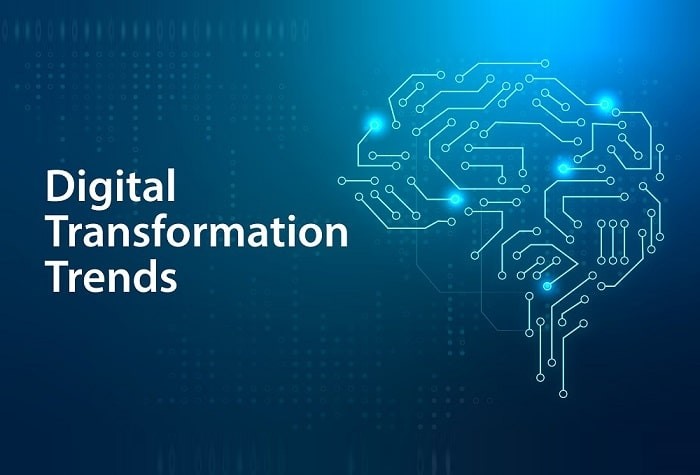
The Rise of Artificial Intelligence and Machine Learning
Artificial intelligence and machine learning have become essential components of modern business, driving significant changes in operations and decision-making. By automating repetitive tasks, AI helps teams focus on strategic work, improving overall productivity. Machine learning algorithms analyze vast amounts of data quickly, providing insights that support informed business decisions as well as enable companies to respond to market trends faster.
One of the most impactful applications of AI is in customer service, where chatbots and virtual assistants enhance user experience. These tools are available 24/7, addressing customer inquiries instantly and reducing wait times. AI-driven customer service solutions also collect data on customer interactions, helping businesses identify patterns and adjust services accordingly. With such advancements, AI and machine learning are essential trends in digital transformation, helping companies deliver more personalized and efficient customer interactions.
In decision-making, AI assists leaders by analyzing data and predicting outcomes based on historical patterns. This predictive ability helps companies make proactive choices, from inventory management to customer preferences. As AI and machine learning technologies continue to evolve, they will remain central to businesses that prioritize efficiency and data-driven strategies. Embracing these trends in digital transformation can give companies a competitive edge in a fast-paced market.
Cloud Computing and Its Expanding Role
Cloud computing has become central to how businesses operate, offering flexible solutions for storage, collaboration, and scalability. By moving data and applications to the cloud, companies access files and tools from anywhere, improving team efficiency. This accessibility is essential for remote and hybrid work models, enabling employees to collaborate in real time regardless of their location.
In addition to accessibility, cloud computing provides scalability that supports growth. Businesses can adjust storage and computing resources based on current needs, avoiding the costs of physical infrastructure. This flexibility allows companies to respond quickly to changing demands, a key advantage in fast-paced environments. Cloud services also simplify data backup and recovery, offering security and reducing downtime in the event of system failures.
As one of the leading trends in digital transformation, cloud computing continues to reshape business operations across industries. Remote work relies on cloud-based tools for communication and project management, ensuring teams stay connected and productive. For many businesses, adopting cloud solutions has become essential to supporting modern work models and driving growth. Embracing cloud technology prepares your business for a future where flexibility and agility are key to success.
Digital Transformation in Customer Experience
Digital transformation in customer experience is reshaping how businesses engage with their audiences, focusing on personalization and efficiency. By using data-driven tools, companies can tailor marketing efforts to individual customer preferences, offering products or services that match each customer’s interests. Personalized marketing builds stronger connections with customers, making interactions feel relevant and valued, which often leads to higher satisfaction and loyalty.
Automated customer support is another way digital tools improve customer experience. Chatbots and virtual assistants allow businesses to provide immediate responses to common inquiries, reducing wait times and also enhancing service. These tools work around the clock, ensuring that customers get assistance whenever needed, not just during business hours. Automation also frees up time for support teams to focus on complex issues, improving overall service quality.
These trends in digital transformation create more seamless and satisfying interactions for customers. By integrating personalized marketing as well as automated support, businesses deliver faster, more relevant service. This approach not only improves customer experience but also builds brand loyalty, helping companies stand out in a competitive market. Embracing digital tools for customer experience is becoming essential as customers increasingly expect efficient and customized interactions.
Automation and Robotics in Business Operations
Automation and robotics are transforming business operations by streamlining workflows and reducing repetitive tasks. By automating routine processes, companies free up employee time to focus on more strategic work. Automation tools handle everything from data entry to customer service inquiries, helping businesses operate more efficiently. These tools improve accuracy as well, reducing errors and increasing consistency across tasks.
Robotics has also become integral in industries like manufacturing and logistics. In manufacturing, robots handle assembly, packaging, and quality control, allowing production lines to run continuously with minimal downtime. Logistics companies are adopting robotic systems for sorting, loading, and even delivering products, making supply chains faster and more reliable. By integrating robotics, companies can achieve greater output while maintaining precision in complex processes.
These trends in digital transformation highlight the growing importance of automation and robotics in keeping businesses competitive. Companies that adopt these technologies are better equipped to meet high demand, adapt quickly, and reduce operational costs. Automation and robotics not only streamline business operations but also support scalability, making it easier for businesses to grow sustainably. As technology advances, the role of automation and robotics will likely continue expanding across various sectors.
Cybersecurity Challenges and Solutions
As digital transformation progresses, cybersecurity has become a priority for businesses protecting sensitive information and customer data. With the rise in digital transactions as well as data storage, cybersecurity challenges continue to grow. Data breaches can cause significant financial loss and damage to a company’s reputation, highlighting the need for robust protection strategies.
One of the leading trends in digital transformation is a focus on advanced data protection measures. Many companies now employ encryption, two-factor authentication, and also regular security audits to safeguard data. Compliance with data protection regulations, such as GDPR and CCPA, is also essential for businesses operating in regulated markets. Adhering to these laws not only avoids legal consequences but also builds customer trust.
Secure software development is another critical area in cybersecurity. By integrating security measures during development, companies reduce vulnerabilities that hackers might exploit. Techniques like code reviews, vulnerability testing, and regular software updates help maintain secure systems. As digital transformation advances, businesses that prioritize cybersecurity are better positioned to protect their data and maintain customer confidence in a rapidly evolving digital landscape.
The Internet of Things (IoT) and Connected Devices
The Internet of Things (IoT) is transforming how businesses monitor and manage their operations by connecting devices to collect and share data in real time. Through IoT, companies gain insights into various processes, allowing for better decision-making and efficiency. In healthcare, IoT-enabled devices track patient vitals remotely, providing real-time data that helps healthcare providers deliver timely care. This technology reduces hospital visits and also enhances patient monitoring outside clinical settings.
Manufacturing also benefits significantly from IoT, where connected devices streamline operations by tracking equipment performance as well as detecting issues early. This proactive approach helps prevent breakdowns and reduce maintenance costs, optimizing productivity on the factory floor. Real-time monitoring allows manufacturers to address potential disruptions quickly, ensuring smoother workflows and consistent output.
Retail businesses use IoT to manage inventory and personalize customer experiences. IoT devices track product levels in real time, automating restocking and preventing shortages. These trends in digital transformation are improving operational efficiency, lowering costs, and enhancing customer satisfaction across multiple sectors. By leveraging IoT technology, businesses can respond to demands quickly, making processes more agile and resilient in today’s competitive environment.
Conclusion
As trends in digital transformation continue to evolve, businesses are gaining new tools to operate more efficiently and also connect with customers meaningfully. Technologies like AI, IoT, and cloud computing are reshaping how companies manage data, streamline workflows, as well as enhance customer experiences. Embracing these trends not only boosts productivity but also keeps your business adaptable in a fast-paced digital environment. By staying updated on these innovations, you can make informed choices that support long-term growth and resilience.


